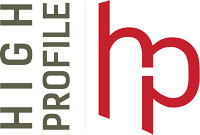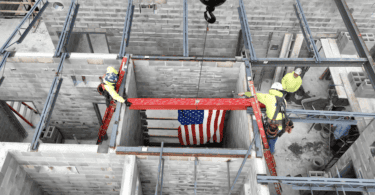by Girard R. Visconti
On public works projects, many states, including Rhode Island and Massachusetts, require performance and payment bonds. A “statutory bond” should be pursuant to the state statute, i.e. citation and its general laws which mandates that a surety will be responsible for the performance of a construction contract as well as claims for labor and materials.
Previously, the American Institute of Architects (AIA) utilized Form A311, which was a basic form and acceptable to many owners. The AIA developed Form A312, which is rather complicated, burdensome and has notice provisions as a prerequisite to recovering under the bond, and the failure to follow the strict notice provisions will result in the surety being absolved of all liability under the bond. (See Seaboard Surety Company v. Town of Greenfield, 370 F.3d 215 (1st Cir. 2004)).
On public works projects, the statutory bond form required should closely resemble the prior AIA A311 type bond, which is without many conditions to recovering against the bond.
AIA A312 is not a statutory bond but is a common law bond that contains onerous and burdensome notice requirements that must be satisfied as a precondition to the surety’s liability under the bond. If the condition precedents are not satisfied, then the obligee/claimant cannot resort to the bond for recovery.
The AIA A312 contains the following conditions:
Section 3: If there is no owner default under the construction contract, the surety’s obligation under this bond shall arise after:
- The owner first provides notice to the contractor and the surety that the owner is considering declaring a contractor default. Such notice shall indicate whether the owner is requesting a conference among the owner, contractor and surety to discuss the contractor’s performance. If the owner does not request a conference, the surety may, within five business days after receipt of the owner’s notice, request such a conference. If the surety timely requests a conference, the owner shall attend. Unless the owner agrees otherwise, any conference requested under this Section 3.1 shall be held within 10 business days of the surety’s receipt of the owner’s notice. If the owner, the contractor and the surety agree, the contractor shall be allowed a reasonable time to perform the construction contract, but such an agreement shall not waive the owner’s right, if any, subsequently to declare a contractor default;
- The owner declares a contractor default, terminates the construction contract and notifies the surety; and
- The owner has agreed to pay the balance of the contract price in accordance with the terms of the construction contract to the surety or to a contractor selected to perform the construction contract.
The bond between the contractor and subcontractor contains similar conditions.
For an owner to recover against a general contractor pursuant to the performance bond (or for a general contractor or CM to recover against a subcontractor’s performance bond using A312) the aforesaid conditions apply under Section 3 of AIA A312.
Pursuing the surety under the A312 bond requires notification to the surety that the owner or contractor is considering declaring a default and requesting a conference and thereafter, the owner or contractor declares the contractor or subcontractor in default and terminates the agreement and notifies the surety and the owner or contractor has agreed to pay the balance of the contract price.
If the owner or contractor does not comply with the strict requirements, the surety bond may be voided.
Such is the matter of Seaboard Surety as noted, plus the First Circuit’s recent opinion of Arch Insurance Company v. The Graphic Builders LLC. (Case No. 21-1126), whereby the court noted that the claimant declared the subcontractor in default but did not terminate the subcontractor and never agreed to pay Arch, the surety, any portion of the contract price. Further, in this case, the contractor failed to terminate the subcontractor “if it sought recourse for the default from Arch.”
The Massachusetts court stated:
“We acknowledge the difficulty contractors may face in navigating between the risk of premature termination of a subcontractor and the risk of failing to comply with the requirements of Section 3 of the A312 Performance Bond.”
And further that,
“Pursuant to the unambiguous language of the performance bond, any obligation of Arch to provide the window warranty was condition on Graphic’s termination of RCM, an action Graphic chose not to take.”
And further that,
“The performance bond required Graphics to terminate RCM to trigger Arch’s obligation to provide a window warranty…”
Conclusion
Utilization of the A312 has a burdensome responsibility of an owner pursuing a surety in relation to a general contractor or CM’s bond or a general contractor or CM’s pursuit of a subcontractor in relation to the AIA A312 bond. To effectuate coverage under the AIA A312, it is clear from the cases that the owner or contractor must declare that the general or subcontractor is in default and terminates the contractor or subcontractor as the case may be and agrees to pay the balance of the contract price and to the surety in accordance with the terms of the contract.
Termination of a contractor or subcontractor is fraught with risks in that there must be “justifiable termination,” a fact-finding issue to be determined by a court or arbitrator.
Thus, it is this author’s opinion that the A312 should not be utilized by an owner either as a public entity or private entity and that a simple statutory or simple surety bond without the three-step process as noted in the AIA A312 be utilized.
Girard R. Visconti, Esq. is partner at Savage Law Partners, LLP.











